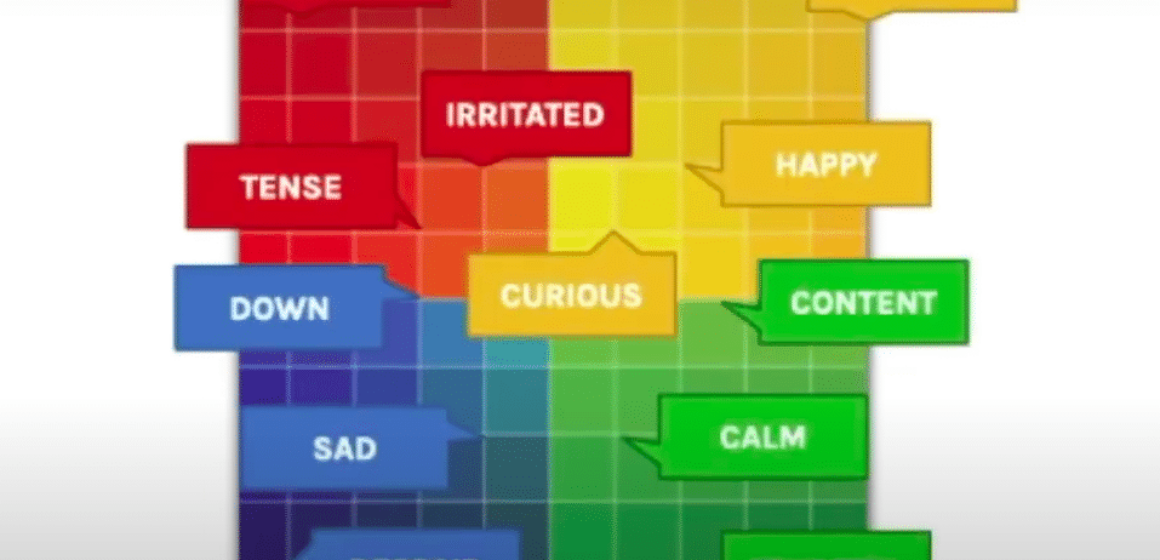The Mood Meter: A Powerful Tool for Emotional Awareness
Emotions play a vital role in our daily lives, influencing our thoughts, behaviors, and interactions with others. Understanding and managing these emotions can significantly enhance our well-being and relationships. One effective tool for cultivating emotional intelligence is the Mood Meter, a resource designed to help individuals recognize, understand, and label their emotions. By enhancing our self- and social-awareness, the Mood Meter serves as a springboard for expressing and regulating emotions effectively.
Understanding the Mood Meter
The Mood Meter is based on a simple yet profound concept: emotions can be plotted along two axes—pleasantness and energy. These axes create four distinct quadrants, each representing a different emotional state:
Red Quadrant (High Energy, Low Pleasantness): This quadrant typically includes emotions such as anger, frustration, and anxiety. When we find ourselves in this state, it’s essential to recognize these feelings to manage them constructively.
Yellow Quadrant (High Energy, High Pleasantness): Emotions like excitement, joy, and enthusiasm fall within this quadrant. These feelings can be motivating and energizing, helping us engage positively with the world.
Green Quadrant (Low Energy, High Pleasantness): This quadrant is associated with calmness, contentment, and relaxation. It represents feelings that allow for reflection and stability, which are essential for maintaining emotional balance.
Blue Quadrant (Low Energy, Low Pleasantness): Emotions such as sadness, boredom, or fatigue are represented in this quadrant. Recognizing these feelings is crucial for seeking support or engaging in activities that can help uplift our mood.
By plotting our current emotions on the Mood Meter, we can identify where we stand emotionally. This practice, often referred to as “checking in” on the Mood Meter, helps us gain insights into our emotional states and prompts us to think critically about how we wish to respond.
Building Self-Awareness
Self-awareness is the cornerstone of emotional intelligence, and the Mood Meter facilitates this by encouraging us to pause and reflect on our feelings. When we check in on the Mood Meter, we not only identify our current emotional state but also begin to understand the underlying causes of these emotions. For instance, if you find yourself in the red quadrant, it may indicate that you are feeling overwhelmed or stressed. Recognizing this can empower you to take proactive steps to manage your emotional state, such as practicing deep breathing or seeking support from a friend.
Enhancing Social Awareness
The Mood Meter is not just a tool for personal reflection; it also enhances our ability to understand the emotions of others. By learning to read the emotional cues of those around us—such as their body language, facial expressions, and tone of voice—we can better empathize with their experiences. This social awareness is crucial for building meaningful relationships and fostering a supportive community.
For example, if a classmate appears withdrawn and is exhibiting signs of sadness, you can recognize that they might be in the blue quadrant of the Mood Meter. Armed with this understanding, you might choose to reach out and offer support, demonstrating empathy and care. This ability to identify and respond to the emotions of others is a vital skill in both personal and professional relationships.
Regulating Emotions
Once we have identified our emotional states through the Mood Meter, we can begin to regulate our emotions effectively. Each quadrant not only provides a snapshot of our feelings but also serves as a guide for appropriate coping strategies.
For instance, if you find yourself in the red quadrant, you might engage in physical activity to release pent-up energy and reduce frustration. Alternatively, if you’re in the blue quadrant, activities like journaling, talking to a friend, or practicing mindfulness may help elevate your mood.
Practicing the Five RULER Skills
The Mood Meter aligns perfectly with the five RULER skills of emotional intelligence: Recognizing, Understanding, Labeling, Expressing, and Regulating emotions. By using the Mood Meter, individuals practice each of these skills:
- Recognizing: Identifying emotions in oneself and others.
- Understanding: Exploring the causes and impacts of those emotions.
- Labeling: Using precise language to describe emotions.
- Expressing: Communicating emotions in a constructive manner.
- Regulating: Implementing strategies to manage emotions effectively.
The Mood Meter is a powerful tool that supports individuals in navigating the complex landscape of emotions. By fostering self- and social-awareness, the Mood Meter helps us recognize, understand, label, express, and regulate our emotions. This not only enhances personal well-being but also strengthens relationships within our communities. As we continue to practice these emotional skills, we become more adept at managing our emotional lives, leading to healthier interactions and a more positive emotional climate in our schools and beyond. In this way, the Mood Meter serves as an essential component of the RULER approach, empowering us to become more emotionally intelligent individuals.
